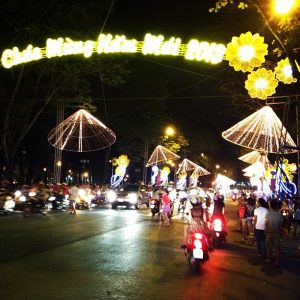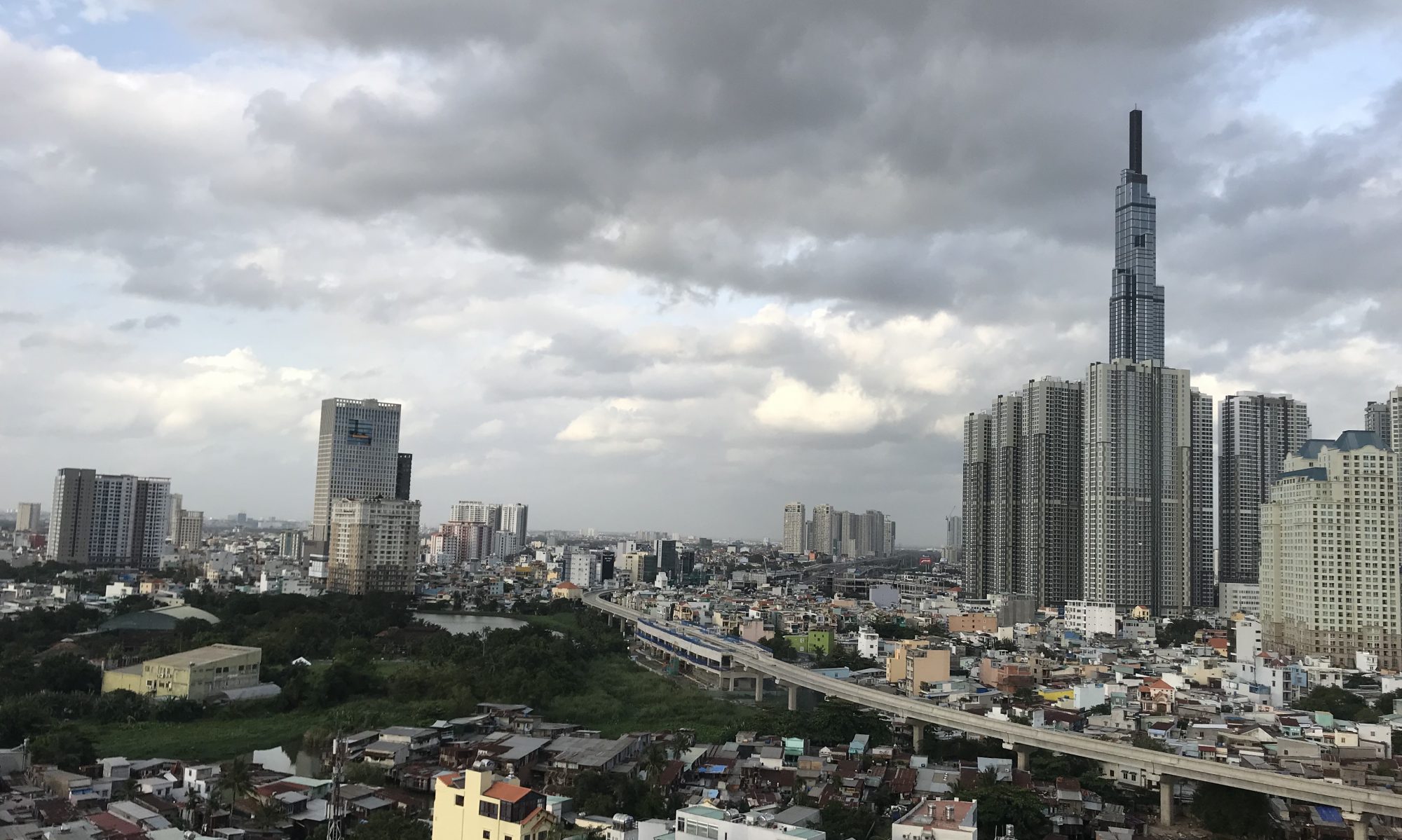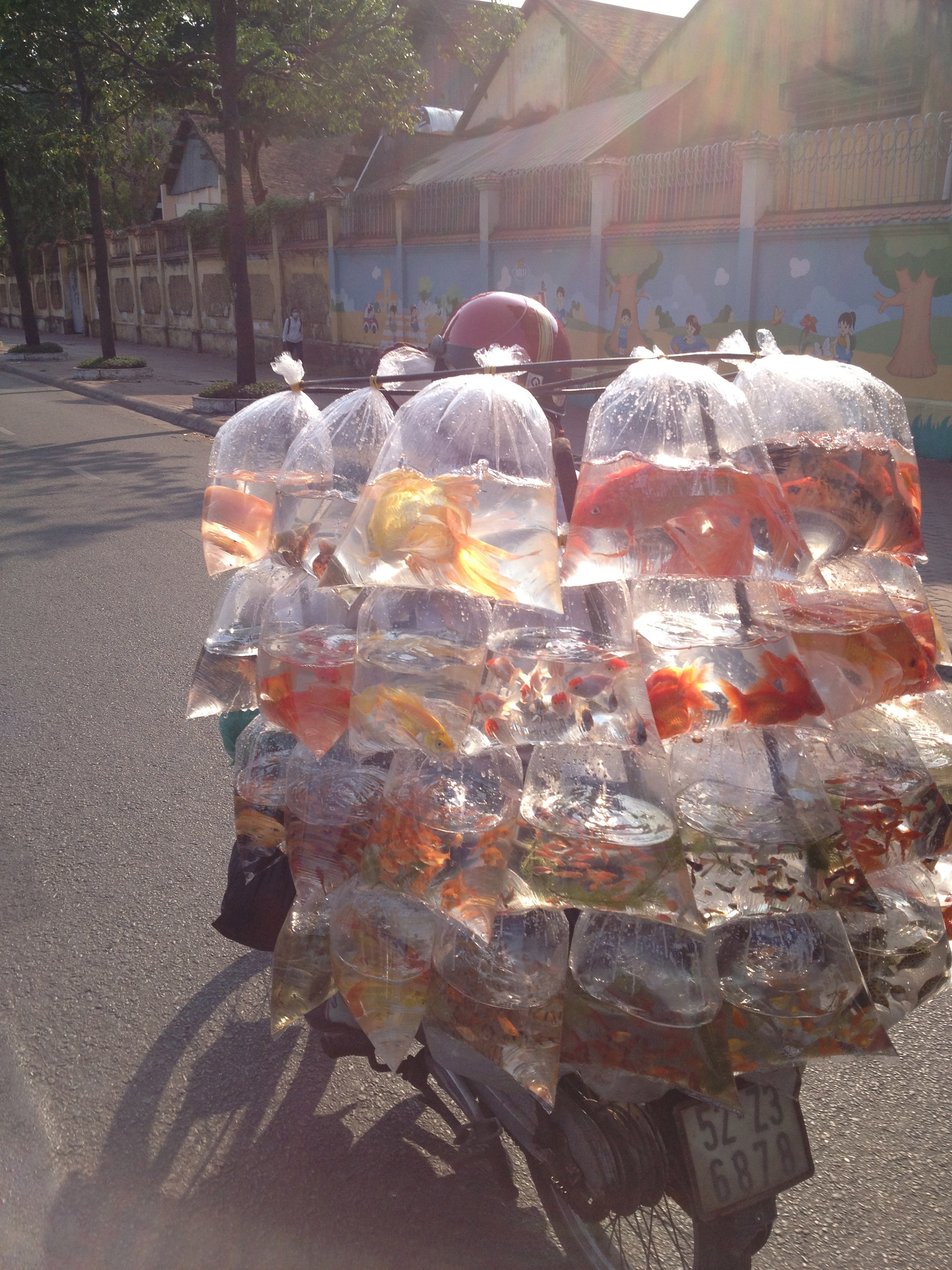ABOUT

Hun Kim is an Assistant Professor in the Department of Urban Planning and Public Policy at the University of California, Irvine. His research focuses on the production of urban space and the political economy of Asian cities. Hun’s current ethnographic work examines inter-Asian and late-socialist connections of urban development and infrastructure in Ho Chi Minh City (Saigon), Vietnam.
Hun holds a Ph.D. in City and Regional Planning with a designated emphasis in Global Metropolitan Studies from the University of California, Berkeley.
RESEARCH
 Hun Kim’s book project, “When the City Becomes: Opacity, Transparency and the Global Arts of Legibility in Late-Socialist Saigon,” examines the contemporary urban transformation of Saigon, Vietnam (officially Ho Chi Minh City).
Hun Kim’s book project, “When the City Becomes: Opacity, Transparency and the Global Arts of Legibility in Late-Socialist Saigon,” examines the contemporary urban transformation of Saigon, Vietnam (officially Ho Chi Minh City).
Vietnam went through its own version of socialist marketization, known as Đổi Mới in 1986, which transformed its economy from centrally planned to incorporating capitalist norms. It did so while maintaining a socialist bureaucracy and political system. The reforms ushered in an era of unprecedented growth: Vietnam has been one of the world’s fastest growing economies for the last forty years. Fueled by speculative influxes of Asian capital, as well as development assistance from both the West and Asian nations, Saigon’s real estate market has undergone multiple cycles of economic boom and bust, with each cycle introducing new rewards and consequences for players in the real estate game.
Rather than a simple trajectory toward market rationality, When the City Becomes argues that Saigon’s transformation is the product of two core modalities of power. Together they are used to govern land, people, and capital. The first, transparency, is an infrastructure of legibility, comprised of master plans, property laws, maps, and anti-corruption reforms that secure real estate and tame the future in ways that are predictable and largely conform to the logics of advanced liberalism. This infrastructure is key to transnational investment, reliable relationships and deals, and definitive artifacts that govern. Opacity, the second modality, is made of the invisible networks of power, regulatory loopholes, and the necessary erasures of inconvenient facts, archives, maps and a rejection of linear notions of history and progress that might appear illogical and capricious. Practices of opacity give the city an ontology of becoming—a revanchist and illiberal impulse that rejects the factual bases of land established in the past and renders the legal and regulatory environment in a state of categorical flux. Yet, despite its seemingly anti-rational sheen, opacity is fundamental towards facilitating tremendous investment, property speculation, and growth in the city. The paradoxical unity of these two modalities of power results in the expansion of the conditions of possibility for the state and its partners to speculate on different imaginaries of the world class city brought by investors from within the region and beyond.
When the City Becomes is an ethnography of the formation of property and land markets through multiple cycles of boom and bust between the years 2010-2024. By centering real estate developers, urban planners, foreign investors, finance brokers, state officials and residents that examines, the book illuminates the contradictions of capitalism under late socialism—a system that simultaneously relies on foreign investment from an increasingly diverse array of global capital while maintaining the one-party state system of control to balance speculative growth with political stability and ensure flexibility in the face of global market forces. It does so by moving away from standard narratives of “transition” and progress to surface a more complex reality: a city that is not only moving towards a capitalist future but one that must constantly hedge its past in order to secure the socialist state’s future.
PUBLICATIONS AND MEDIA
2024 | “Property-Time: Serial Archives, Settler Logics, and Illiberal Space–Time Oddities.” City (Taylor and Francis: Online First). 1–24.
2020 | “Corruption as Infrastructure: Rendering the New Saigon Global.” International Journal of Urban and Regional Research 44(6): 1057-1071
2017 | “Capturing World Class Urbanism Through Modal Governance in Saigon.” positions: Asia critique 25(4): 669-692.
2016 | Jadaliyya Cities: City Talks, Ananya Roy (28 mins), May 15, With Hiba Bou Akar
2012 | “Quy hoạch phi chính thức, Saigon” [Informal Planning in Saigon] in đô thị [Urban Planning Magazine] September.
CV
APPOINTMENTS
2018 – Assistant Professor, Department of Urban Planning and Public Policy, UC Irvine
2017-2018 Assistant Professor, Department of Geography, University of British Columbia
EDUCATION
University of California, Berkeley, Ph.D. (conferred December 2015)
City and Regional Planning
University of California, Berkeley, M.C.P. (2009)
City and Regional Planning
University of California, Berkeley, B.A. (1999)
Philosophy
RESEARCH INTERESTS
Urban studies, specifically political economy of cities, space as mode of production; ethnography; late-socialist and transitioning economies; East and Southeast Asia.
FELLOWSHIPS AND AWARDS
2018-2019 | Social Science and Humanities Research Council of Canada (SSHRC), Insight Development Grant
PROFESSIONAL ASSOCIATIONS AND AFFILIATIONS
Association of Collegiate Schools of Planning
Association of American Geographers
American Anthropological Association
Association of Asian Studies
CONTACT
Hun Kim
Department of Urban Planning and Public Policy
University of California, Irvine
218G Social Ecology I
Irvine, California
92697-7075
Email: hunkim@uci.edu

